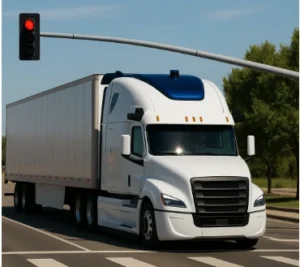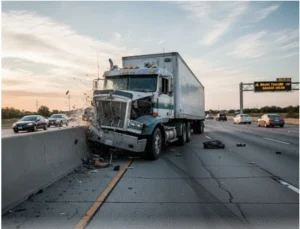Thirty-eight percent of drivers misuse personal transportation time, according to data compiled by CVSA.
The Commercial Vehicle Safety Alliance (CVSA) plans to formally request that the Federal Motor Carrier Safety Administration (FMCSA) impose a two-hour limit on the use of personal conveyance by truck drivers, following the discovery of increasing misuse of this provision.
Based on data collected from more than 41,000 roadside inspections, the CVSA found that 38% of the drivers analyzed were incorrectly using personal conveyance time. This time is intended for non-work-related travel, such as going to get food, finding lodging, or running personal errands. However, many drivers are using it to extend their driving time and bypass Hours of Service (HOS) regulations, thereby increasing roadway risks.
Jeremy Disbrow, a roadside inspection specialist with the CVSA, explained that the misuse by nearly 40% of drivers is not only alarming but also results in non-compliant behavior that creates confusion within the industry.

CVSA prepares petition to limit use of personal conveyance
CVSA Deputy Executive Director Adrienne Gildea noted that FMCSA’s current guidelines lack clarity, which makes it difficult for inspectors to identify misuse. Moreover, it allows some drivers to operate beyond their legal limits, increasing the risk of fatigue and accidents. In fact, according to federal data, drivers who abuse the provision are four times more likely to be involved in a crash and show higher rates of out-of-service violations.
In this context, the CVSA is preparing to submit a new petition to the FMCSA in the coming weeks that would limit the use of personal conveyance to two hours per day. This would mark the alliance’s third attempt in the past four years to persuade federal regulators to tighten the rules around this issue.
Appropriate uses of personal conveyance include travel for food, lodging, or recreational activities, as well as travel to a terminal or safe location after loading or unloading. In contrast, inappropriate uses include advancing a delivery, returning home for work purposes, transporting cargo, or enhancing a vehicle’s operational readiness.

The CVSA will request that the FMCSA, in addition to imposing the two-hour daily limit, also consider prohibiting personal conveyance time from being counted as “off-duty,” issuing written guidance on its use after service limits have been reached, clarifying terms like “enhancing operational availability,” defining “yard move,” and clearly distinguishing between personal use and personal conveyance.
The CVSA hopes that the new data and gathered evidence will finally convince regulators of the need to strengthen the rules and close this loophole that affects road safety.

Results of Safe Driving Week: more than 2,500 fines and warnings
Operation Safe Driving Week 2025 concluded with a total of 8,739 vehicles stopped. Operation Safe Driver Week 2025 concluded with a significant overview of road

USDOT Withholds $40 Million from California Over English Proficiency “Rule Rebellion”
The U.S. Department of Transportation (USDOT) has announced that it will withhold more than $40 million in federal highway safety funds from California for failing to enforce national English Language Proficiency (ELP) standards for commercial truck drivers.

ICE operation detains 120 drivers along the I-40
A three-day ICE operation along the I-40 led to the detention of 120 drivers for immigration-related violations. A three-day operation along Interstate 40 in western

October’s bankruptcy spike: 5 carriers file for Chapter 11 in just two weeks
During the first half of October five transportation-related companies filed for bankruptcy under Chapter 11. The transportation industry has gone through difficult months, but October

Could It Happen with Trucks? Tesla Investigation Reopens the Debate on Autonomous Freight Safety
Could It Happen with Trucks? Tesla Investigation Reopens the Debate on Autonomous Freight Safety

Road Safety in the U.S.: Faulty Brakes and Slow Tech Adoption Still Cause Thousands of Truck Crashes Every Year
Road Safety in the U.S.: Faulty Brakes and Slow Tech Adoption Still Cause Thousands of Truck Crashes Every Year
